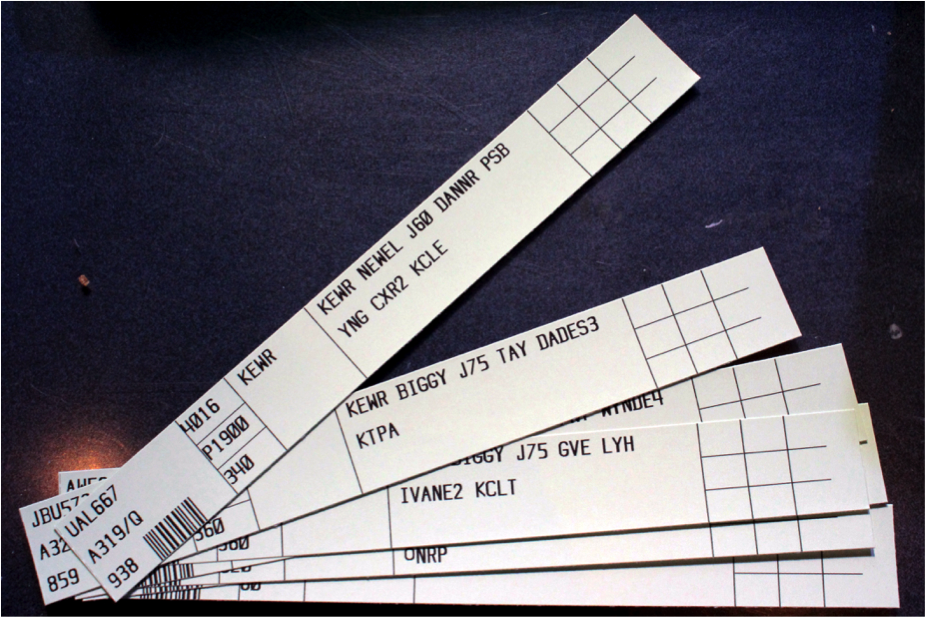July 13, 2017
In the 1990s when anyone talked about air traffic control (ATC) reform one image came to mind: the vacuum tube. This predecessor to the transistor became the symbol of the Federal Aviation Administration’s (FAA) failure to modernize the system. At that point in time the FAA was reportedly the biggest buyer of vacuum tubes worldwide. They were using so many that they actually had to procure them in the former Soviet block countries due to the fact that those countries were the only ones that still produced them in mass. The vacuum tube was so infamous that it made the cover of the USATS report and U.S. DOT Secretary Federico Peña had one with him when he presented the Clinton’s administration proposal to reform ATC governance (based on the USATS report).
 Twenty-odd years later, ATC reform is center stage once more. And just as in the 1990s the House Transportation and Infrastructure (T&I) Committee Chairman Bill Shuster (R-PA) is using props to prove his point. However, they are not of the vacuum variety. In a hearing in May, Chairman Shuster instead brought a pile of paper strips with him (those pieces of paper in the left on the picture). T&I Ranking Member Peter DeFazio (D-OR) has also used these strips multiple times – most recently during the mark up of the 2017 AIRR Act a few weeks ago (DeFazio was making the case that the FAA was on the right track and their version of electronic flight strips will be much more advanced than the ones used in other countries). But what is the fuss about replacing these tiny pieces of paper? It begins with the fact that efforts have been ongoing for years to modernize and leave these little paper strips behind.
Twenty-odd years later, ATC reform is center stage once more. And just as in the 1990s the House Transportation and Infrastructure (T&I) Committee Chairman Bill Shuster (R-PA) is using props to prove his point. However, they are not of the vacuum variety. In a hearing in May, Chairman Shuster instead brought a pile of paper strips with him (those pieces of paper in the left on the picture). T&I Ranking Member Peter DeFazio (D-OR) has also used these strips multiple times – most recently during the mark up of the 2017 AIRR Act a few weeks ago (DeFazio was making the case that the FAA was on the right track and their version of electronic flight strips will be much more advanced than the ones used in other countries). But what is the fuss about replacing these tiny pieces of paper? It begins with the fact that efforts have been ongoing for years to modernize and leave these little paper strips behind.
In the U.S. efforts to replace paper flight strips with electronic versions goes as far back as 1983. But despite that, current plans only envision electronic flight strips becoming fully deployed by 2028 (that 45 years later, for those who are counting). But let’s start from the beginning: in 1983, as part of its plan to fundamentally change the way ATC was provided in the U.S., the FAA introduced it’s plan for the Advanced Automation System (AAS). If you thing you’ve heard that before, you’re not mistaken: in 2003, when FAA introduced NextGen, the type of language used was remarkably similar. Part of AAS were electronic flight strips, which were envisioned to be in around 150-260 FAA facilities by the end of the century. But, and again not unlike NextGen, many of the initial goals of AAS were dropped, electronic flight strips among them, which, according to the Government Accountability Office (GAO) “were too technically challenging and costly to develop.” This was after, according to U.S. DOT’s Inspector General (IG), the FAA “[struggling] with finalizing requirements for electronic flight strips”. Anyone following NextGen deployment and the multitude of GAO and IG reports about the program would have read about those FAA struggles with the various NextGen programs. AAS itself was mothballed by the Clinton administration after $1.5 billion spent, including $1 billion that was “wasted”.
Despite the abandonment of AAS, it didn’t take until NextGen was a thing for electronic flight strips to be part of FAA plans: the National Airspace System Architecture: Version 4.0 talks multiple times about “stripless” operations and the “elimination of paper flight strips”. Meanwhile the FAA actually starting developing electronic flights strips, together with Airways New Zealand, for its oceanic services which controls vast areas of airspace in the Atlantic and Pacific. Part of the Advanced Technologies & Oceanic Procedures, they have been in use since the mid-2000s.
Over land the picture is quite different though. While we have heard from people in the industry that the FAA has had multiple pilot programs to developed electronic strips during the 1980s and 1990s it has been hard to pinpoint sources giving more details. Still, we have discovered studies about pilot projects at Boston Logan airport in both the early 1990s and the early 2000s. Right now, a pilot project is going on at Phoenix airport. But the FAA had plans for it to be out of the pilot stage by now: new towers at Las Vegas and San Francisco airports were built on the expectation that by 2016 paper strips would be no longer used. Alas, that did not came to be, and before these multi-million dollar towers opened they had to be “retro-fitted” with the printers and boards that are need for paper flight strips.
Right now, the FAA has a 12-year long $344-million contract signed with Lockheed Martin to deploy the Terminal Flight Data Manager (TFDM) which, among other things, includes the replacement of paper flight strips with electronic versions. But while the 1980s AAS talked about hundreds of FAA facilities equipped with electronic flight strips, 2016’s TFDM contract aims at having 89 towers equipped with them.

Photo from NYCAviation (this article)
In Canada, the situation developed much quicker and 11 years (that is, a smaller period of time than the entire TFDM contract) after they start experimenting with electronic flight strips their use was widespread to all of their facilities nationwide. The first tests of what is now called NAVCANstrips took place in Calgary, Edmonton, and Ottawa in 1998 (two years after NAV CANADA, the Canadian nonprofit ATC provider, was created). In the period between 2001 and 2003, a third iteration of the prototype system graduated from prototype and into commercial use and began to be installed in all Canadian commercial airports and well their terminal centers (the equivalent of U.S.’s TRACONs, which control air traffic in a given region). That process ended in 2006. By 2009, all NAV CANADA facilities, including those serving general aviation, were equipped with electronic flight strips. Given that NAV CANADA is both an operator and a manufacturer of equipment for ATC, the technology that they developed has been sold to multiple countries worldwide, including Australia, Denmark, Dubai, Italy, and United Kingdom.
This last point deserves a closer look. Given NAV CANADA’s structure as a stakeholder-governed co-op it makes total sense that they became not only an ATC provider, but also a manufacturer of equipment: since users run the system they have the greatest interest in keeping costs low (which they have achieved, with user fees are now 30 percent lower in real terms than they were when first enacted in 1999—between 1996 and 1999 NAV CANADA was still funded by the government —with another cut coming later this year). Because NAV CANADA is developing many technologies in house, the natural step is then to sell these products (via their commercial arm NAVCANatm) to other ATC providers. Thus, the profits that NAVCANatm generates can be used to subsidize the costs of providing ATC in Canada, keeping user fees low for the stakeholders that govern the system.
While just an anecdote, flight strips are just another example that the FAA faces when developing new technologies: despite being part of the goals since the Reagan Administration, they are just now moving towards having them available widely (but at a smaller scale then they envisioned back in 1983). Meanwhile, NAV CANADA, with its much nimbler structure, despite starting 15 years later, completed nationwide deployment in just 11 years (and almost two decades before the current FAA timeline) and is now one of the major sellers of the technology, helping to keep costs low for people flying in Canadian airspace.
For more on the issue of ATC reform see our FAA Reform Reference Page as well as our most recent report on the issue, Time for Reform: Delivering Modern Air Traffic Control.

 Twenty-odd years later, ATC reform is center stage once more. And just as in the 1990s the House Transportation and Infrastructure (T&I) Committee Chairman Bill Shuster (R-PA) is using props to prove his point. However, they are not of the vacuum variety. In a
Twenty-odd years later, ATC reform is center stage once more. And just as in the 1990s the House Transportation and Infrastructure (T&I) Committee Chairman Bill Shuster (R-PA) is using props to prove his point. However, they are not of the vacuum variety. In a 


